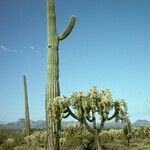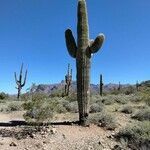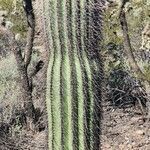Stems 25+ cm diam., widest where proximal branches arise; pith 10+ cm diam. Flowers usually ter-minal, 6.5-8.5 cm diam.; scales on flower tubes broadly triangular to rounded, green with red apices; ovary with locule to 25 mm; filaments white, short; anthers tan. Seeds: testa thin. 2n = 22.






